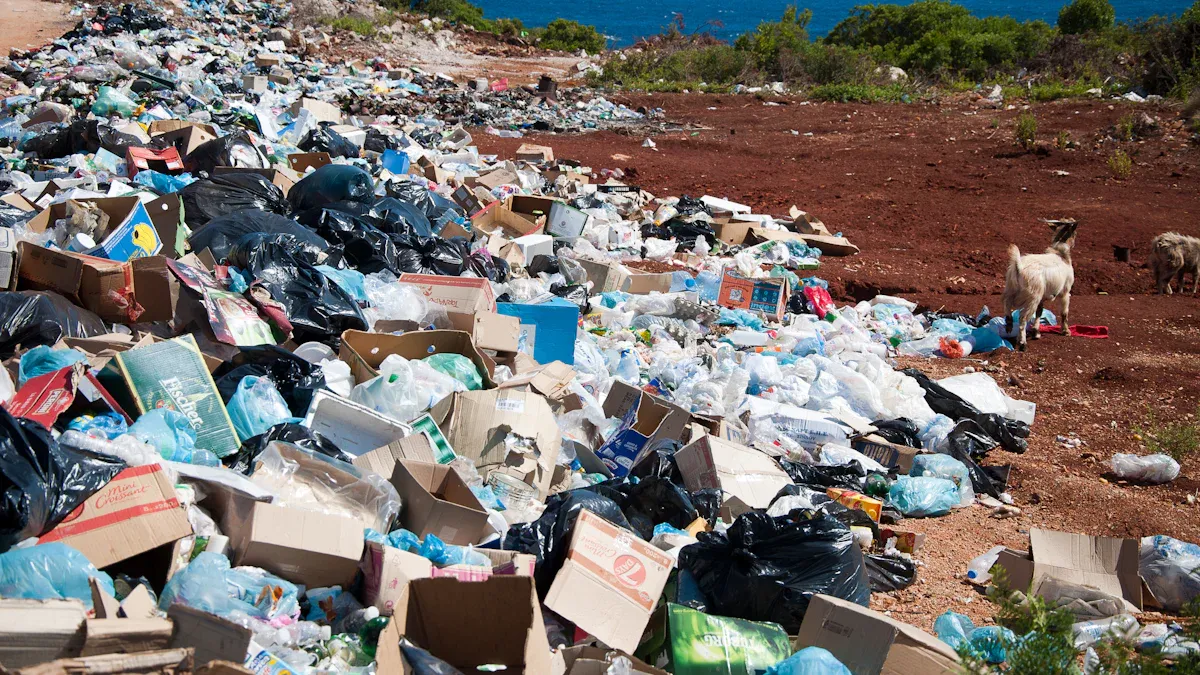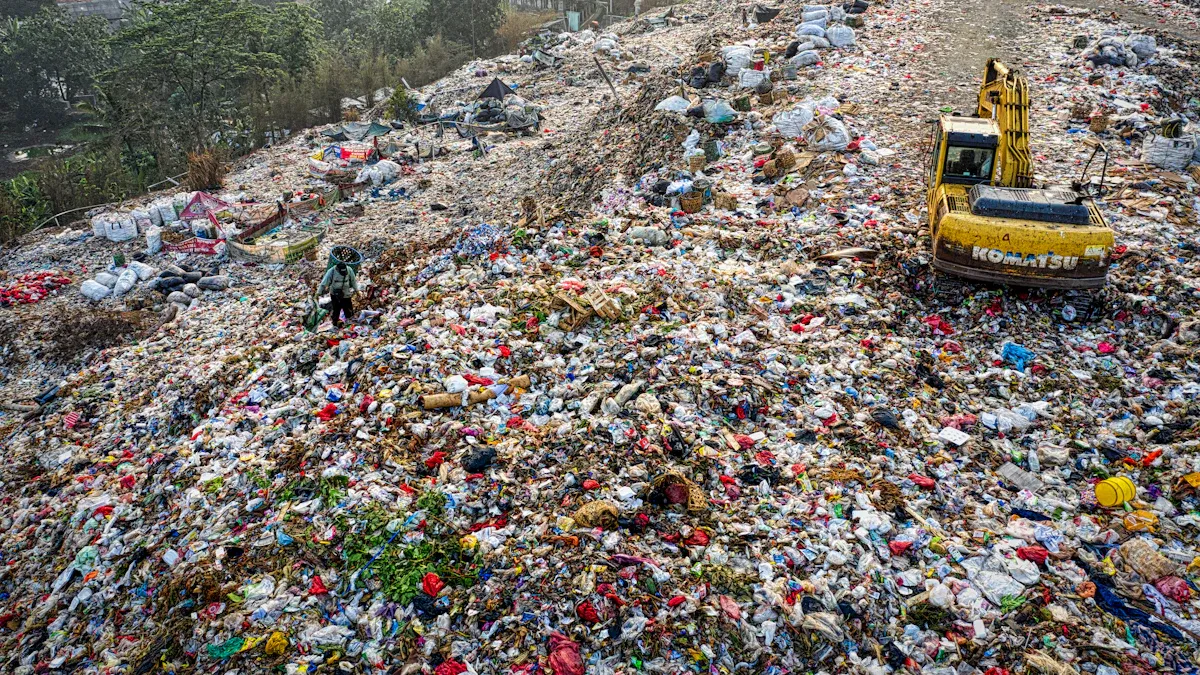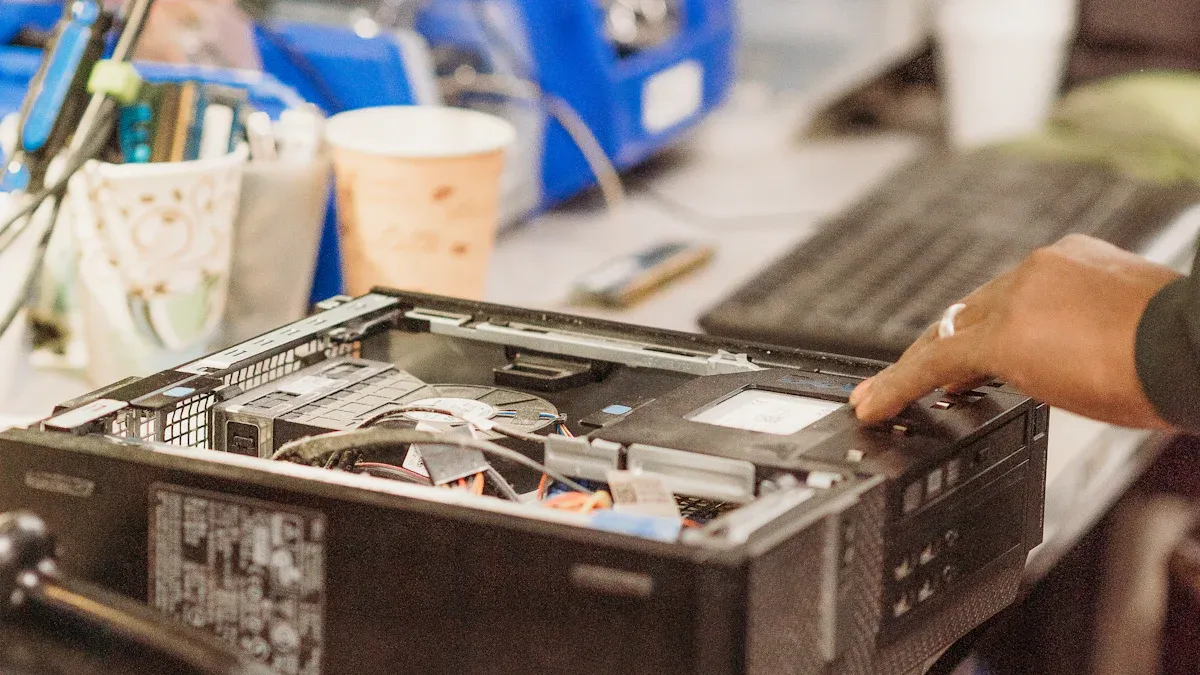LED Light Disposal: Environmentally Responsible Methods and Recycling Options

You can support the environment by practicing proper LED light disposal at home. Instead of throwing LED lights in the trash, consider recycling them. Many home improvement stores, including Lowe’s and Home Depot, have bins specifically for recycling bulbs. Some city centers also offer collection points for LED light disposal. If you can’t drop off your bulbs nearby, mail-in services provide an eco-friendly alternative. At our company, About Us, we are committed to promoting responsible product recycling. Remember to always check your local regulations for proper LED light disposal to maintain good eco-friendly habits.
Key Takeaways
Try to recycle LED bulbs when you can. This keeps dangerous things like lead and arsenic out of nature. Check your local recycling rules before throwing away LED bulbs. Rules and programs are different in each place. Be careful with used or broken LED bulbs. Wear gloves and clean up pieces safely. This keeps you and others safe. Use local recycling centers, store take-back programs, or mail-in services to recycle LED bulbs. This helps save important materials. Recycling LED bulbs makes less trash. It saves resources and helps keep the Earth clean and safe for all people.
Why LED Light Disposal Matters

Environmental Benefits
When you throw away LED bulbs the right way, you help the environment. LED bulbs have things like lead and arsenic inside them. If you put them in the trash, these harmful things can get into nature. This can hurt people and animals. Broken bulbs can also cut workers who pick up trash. Recycling bulbs the right way stops these problems and keeps the earth safe.
Tip: Be careful when you handle used LED bulbs. Try not to break them. This keeps you and the earth safe.
Throwing LED bulbs away the wrong way makes more trash and pollution. Recycling keeps good materials out of landfills. It also means we do not need to dig up as many new resources. When you recycle, you help the earth and make less pollution from lights.
Resource Recovery
LED bulbs are not just for light. They have things like aluminum, copper, glass, plastics, and rare earth elements. These can be used again. For example, aluminum from bulbs can be recycled many times. Making new aluminum uses more energy than recycling it. Recycling saves energy and helps the earth.
LED bulbs also have gold, silver, and copper. These metals are important for electronics and green energy. When you recycle LED bulbs, these metals can be used again. This means we do not need to dig up as many new metals. Recycling helps the earth and makes less waste.
Special machines are used to recycle LED bulbs. First, the bulbs are broken into small pieces. Then, magnets and other tools sort out the metals, glass, and plastics. This makes sure good parts do not go to waste. When you recycle your LED bulbs, you help use things again and make less pollution from lights.
How to Dispose of LED Light Bulbs
Regular Trash vs. Recycling
You may wonder if you can put LED bulbs in the trash. LED bulbs do not have mercury, so they are not as dangerous as some other bulbs. Many places let you throw LED bulbs away with your regular garbage. But recycling is better for the earth. When you recycle LED light bulbs, you help save things like aluminum, copper, and glass. This means less trash goes to landfills and helps the planet. If you throw LED bulbs in the trash, these good parts get wasted and can hurt the environment. State and federal groups say recycling LED bulbs is best to help the earth.
Note: Recycling LED bulbs keeps good materials out of landfills and helps make the world cleaner.
Local Guidelines
Rules for led light disposal are different in each place. Some cities or counties have special ways to recycle light bulbs. Some places do not take LED bulbs at normal recycling centers. Always ask your local waste or recycling company if they take LED bulbs. If they do not, you can put them in the trash because they do not have mercury. Keep LED bulbs apart from other bulbs for safety and proper disposal.
Here is a table to show how LED bulbs are different from other bulbs:
Bulb Type | Hazardous Components | Disposal Requirements | Additional Notes |
|---|---|---|---|
LED Bulbs | Lead, arsenic (no mercury) | Often not accepted in recycling programs; usually disposed in landfill unless special collection available | Hazardous substances can contaminate landfill and water; check local recycling options |
CFLs | Mercury | Must not be thrown in regular trash unless local rules allow; require special recycling to recover mercury, glass, and metal | Mercury is toxic; broken bulbs require careful cleanup per EPA guidelines |
Fluorescent Tubes | Mercury | Considered universal hazardous waste; not accepted in curbside collection; accepted at special drop-off recycling programs | Fragile and bulky; pose risk to sanitation workers and environment |
CFLs and fluorescent tubes have mercury, which is very dangerous. You must take these bulbs to a special recycling place or hazardous waste center. If a CFL or tube breaks, put the pieces in a container and follow EPA rules to clean up. LED bulbs do not have mercury, so you do not need to follow these strict rules.
Common Mistakes to Avoid
Many people make mistakes with led light disposal. Here are some things to remember:
Some people think LED bulbs have mercury, but they do not.
Many people do not check if their local recycling program takes LED bulbs, so they throw them away even when they could recycle.
Some people mix LED bulbs with CFLs or fluorescent tubes, but those need special disposal.
To avoid these mistakes:
Ask your local recycling company if they take LED bulbs.
If you cannot recycle, put LED bulbs in your regular trash.
Keep LED bulbs away from bulbs with mercury to make sure you follow the right steps.
Tip: Always sort your bulbs by type before recycling or throwing them away. This helps keep the earth safe and stops dangerous things from getting into landfills.
Recycling light bulbs is important for the earth. By following local rules and recycling instead of using the trash, you help make less waste and keep dangerous things out of nature. Recycling led bulbs and other bulbs helps make the world cleaner and safer for everyone.
Recycling Options

If you want to recycle led light bulbs, you have a few choices. Each way helps keep bulbs out of landfills and helps the earth. You can use local recycling centers, take-back programs from manufacturers, or mail-in recycling programs. These programs make it easy to recycle bulbs in a safe and green way.
Local Recycling Centers
Local recycling centers are a popular way to recycle bulbs. You can drop off bulbs at city recycling centers or special events. These places collect bulbs and send them to special facilities. The facilities try to get valuable materials from the bulbs. But recycling led bulbs is not always easy. These bulbs have many parts like plastics, metals, and rare earth elements. It is hard to separate all these materials. Some centers only get about 40% of the materials from white led bulbs. They also need special machines to handle dangerous things like arsenic compounds. Even with these problems, local recycling programs help cut down on waste and support the planet.
Tip: Always ask your local recycling program before dropping off bulbs. Some centers do not take led bulbs, so check first.
Retailer Take-Back Programs
You might look for recycling programs at stores like Home Depot or Lowe’s. Most big stores do not have a recycling program for led bulbs. Some manufacturers, like Philips, have their own recycling programs. These programs let you return bulbs for safe disposal. In some places, like Europe, laws say manufacturers must collect used bulbs. If you want to use a recycling program, check the manufacturer’s website for drop-off spots or steps.
Mail-In Services
Mail-in recycling programs give you another way to recycle led bulbs. These services send you a kit with a box, labels, and instructions. You pack your bulbs, follow the steps, and send the kit back. The kits cost between $29.95 and $124.95, depending on size and type. The kit comes with prepaid shipping and a recycling certificate. You can save bulbs for up to one year before mailing them. Mail-in programs are quick, simple, and safe. They help you recycle bulbs if you do not have a local center.
Aspect | Details |
|---|---|
Cost Range | $29.95 to $124.95 depending on kit size and type |
Kit Contents | Container, EPA/DOT labeling, instructions, prepaid shipping, certificate of recycling |
Procedure | Buy kit → Pack bulbs → Ship to recycling center |
Service Benefits | Convenient, safe, supports proper recycling of led and other bulbs |
Note: Mail-in recycling programs are good if you have many bulbs or no local drop-off.
Recycling light bulbs helps save valuable materials and supports the earth. By using recycling programs, you keep led bulbs out of landfills and help protect nature.
Preparation Steps
Safe Handling
You need to handle used or broken led bulbs with care. These bulbs can contain small amounts of lead, arsenic, and nickel. Even though they are not as dangerous as some other types, you should still protect yourself and the environment.
Always wear protective gloves before touching broken led bulbs. This keeps your hands safe from sharp glass and harmful substances.
Use a stiff piece of cardboard to sweep up any fragments. Avoid using a broom, which can spread tiny pieces.
Pick up small pieces with sticky tape. This helps you collect every bit of the broken led bulbs.
Place all fragments and tape into a plastic bag. Seal the bag tightly.
Store the sealed bag inside a sturdy container, like a cardboard box or fiber drum. Keep the container closed when you are not adding more bulbs.
Clearly label the container with the type of waste and the date you started collecting it. This helps you track how long you have stored the bulbs.
Tip: Never crush led bulbs on purpose. Crushing can release harmful materials and make cleanup harder.
If you break a led bulb, clean up right away. Keep the area safe for people and pets. Contact your local waste agency for more instructions if you are unsure.
Transport Tips
When you get ready to recycle led bulbs, you should prepare them for safe transport. Most curbside recycling programs do not accept these bulbs, so you need to use drop-off centers or mail-in services.
Remove any plastic sleeves or collars from the bulbs. Recyclers cannot process these extra parts.
Place each led bulb in a plastic bag. This step helps prevent breakage during transport.
Seal the bags and put them in a sturdy box or container. This keeps the bulbs safe and makes carrying them easier.
Label the container with "universal waste lamps" and the date you started collecting. This helps recycling centers process your bulbs correctly.
Do not throw led bulbs in the trash or burn them. Recycling keeps harmful materials out of landfills and the air.
Check with your local recycling center or big box store, such as Home Depot, to find out if they accept led bulbs.
Note: You can transport your own led bulbs to a recycling center. You remain responsible for making sure they reach the right place.
By following these steps, you help protect yourself and the environment. You also make sure your led bulbs get recycled the right way.
When you recycle led bulbs, you help the earth a lot. Recycling stops toxic materials from getting into nature. It also lets us reuse up to 95% of each bulb’s parts. This keeps your community safe and cuts down on waste. Many local centers and stores make recycling simple and safe. If you follow local rules and pick green choices, you help keep the world clean. Start now—recycle every bulb the right way and help everyone have a healthy place to live.
FAQ
Can you throw LED bulbs in the regular trash?
You can put LED bulbs in the trash if your city does not recycle them. Recycling is better for the earth. Always check your local rules before you decide.
Do LED bulbs contain mercury?
LED bulbs do not have mercury. You do not need to worry about mercury exposure when handling or disposing of them. This makes them safer than CFLs or fluorescent tubes.
Where can you recycle LED bulbs?
Many home improvement stores, local recycling centers, and mail-in programs accept LED bulbs. You should call ahead or check online to see if your chosen location takes them.
What should you do if an LED bulb breaks?
Wear gloves to protect your hands.
Use cardboard to pick up big pieces.
Stick tape to collect small bits.
Place everything in a sealed bag before disposal.
Why is recycling LED bulbs important?
Recycling LED bulbs saves valuable materials like aluminum and copper. You help reduce landfill waste and protect the environment. Recycling also supports the reuse of rare metals found in LEDs.
See Also
Understanding LED Bulb Technology And Choosing The Best
Key Features And Benefits Of GE LED Light Bulbs
Comparing LED Streetlights With Traditional Lights On Efficiency
Advantages Of LED Street Bulbs For Modern Energy Savings
Choosing Efficient Industrial LED Bulbs For Various Applications

